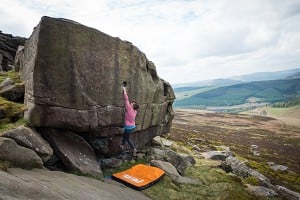
Peter Hubbard makes the argument for perceiving climbing as a craft or art form and explains how this approach can tie into anthropology, environmentalism and Romanticism...
Is our grading system reinforcing a danger-difficulty emphasis in climbing culture? If a guidebook says a route is graded VS 4c ** - what does this tell us? VS, the adjectival grade, says how bold, dangerous, exposed or generally complex a climb is. 4c, the technical grade, is an attempt to give an objective level of difficulty of the climb's hardest move. Danger and difficulty are inevitably key elements of climbing, but the star rating hints at something apart from them. This is a measure of the climb's quality.
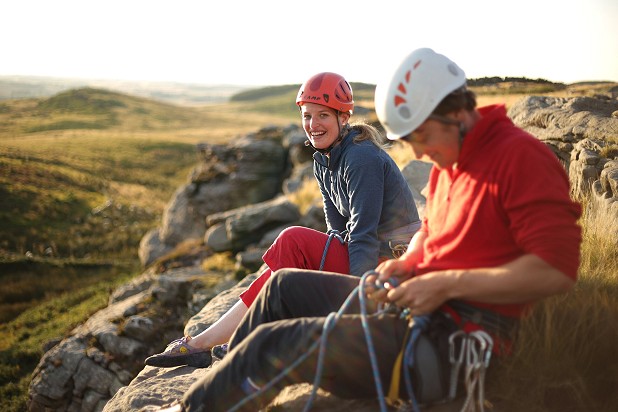
The stars celebrate something more nebulous - the pristine nature of the rock, the historic status of the climb, a stunningly obvious line, an elegant sequence, enjoyably devious moves, or perhaps a situation that catches the evening sun. Why we are compelled to climb, why we enjoy it, is captured in these symbols. I argue that the quality of our climbs, and our skill in climbing them, is what should matter to us.
Part of the problem is that we typically call climbing a sport, with connotations of competition and rules. After climbing debuted in the Olympics in 2021 it is, perhaps more than ever, seen as a sport. I have to admit that it was great fun to watch, but it didn't relate much to what climbing is like for me. For a "normal climber", is sport the right term for what we do? I suspect that for most climbers this is pretty far from the mark.
For me, climbing offers something more anarchic, passionate and artful. Describing climbing as a sport probably has roots in the nineteenth century, when rock climbing supposedly spun off from mountaineering and became its own thing. Physical pursuits, like clambering up rocks had previously been seen as rather vulgar. Thanks to Victorian ideas about Muscular Christianity, and British Empire fair-play, they could now be exercises in moral and spiritual discipline.
The much-celebrated first rock-climb by Samuel Taylor Coleridge certainly led to some heady feelings. The English Romantic poet had been stumbling about over Scafell and ended up finding it awkward to get down Broad Stand. "My limbs were all atremble," he tells us, and then "I lay in a state of almost prophetic Trance and Delight - and blessed God aloud." Clearly, he was in a tight spot. Somehow, he pulled himself together and slid down what is now called Fat Man's Agony. In his account, the landscape is mostly relegated to a backdrop. His purpose for climbing was to seek sensations. Seems like he got some.
A fulfilling aspect of my work is introducing primary school children to climbing. In these first experiences, fear and danger are usually high in their thoughts. But on a top rope, on a slab, on a sunny day, they are often quick to trust the rope and realise that the danger is much less than they thought. Research has shown that although climbers choose to take risks, they are not motivated by it. Rather, they are concerned with safety and competence and these concerns grow with their skill and experience.
At the extreme end of danger is free soloing and the obvious example to trot out here is Alex Honnold. Clearly, he has chosen to do something very dangerous. He explains that he "likes the movement" and "if you do something for fun all the time, every once in a while you want to have consequences." For Honnold the fun is in the movements, in knowing he has put in the practice and preparation to complete hard climbing with millimetre precision. I wonder if, when soloing El Cap, like children on their first few climbs, he realised that with his (admittedly extreme) level of ability, the danger was less than he imagined.
When discussing difficulty in climbing, the first port of call must be Adam Ondra. In 2017 he climbed the first 9c, Silence, in Flatanger Cave in Norway. Here's a man motivated by difficulty in his climbing. When asked about his motivations, he tends to wax lyrical about how much he loves travel, being in nature, having a glass of wine and being around the fire. No mention of crimping hard there or the brutal training regime he must have. The hard climbing is almost an overspill, I think, from his extraordinary love for the overall climbing experience.
Danger and difficulty, then, have their influence on our motivations to climb, but aren't the whole picture. Another view on what makes a climb fun is using our movements creatively to get up a route. I first read some books by Tim Ingold, a social anthropologist, to learn more about environmental education. When I read about his ideas of craft and skill, it reminded me of how I felt about climbing.
In considering how craftspeople make things, he dismisses the idea that there is a predetermined form in the maker's mind, that must then be realised by chipping away at the block with a chisel, say. For Ingold, there is more creativity and expression in the act of making. The craftsperson responds to the individual nature of the material and improvises a response. In the traditional view, the craftsperson finds out the properties of the materials and then follows a plan in their mind. For Ingold, materials, and tools, are practically experienced and become part of the maker's life. Makers don't put their body to use, like sending instructions to a machine, but have qualities of care, judgement, and dexterity. They watch and feel as they work and make continual adjustments to changing conditions in the material.
For me, this is true of how it feels to climb. I look up at a climb, and might try to read the moves, but I can't climb it in my mind. A climb must be practically experienced. As I climb, I improvise with each movement. A subtle movement of a hand so an edge feels better, spotting just where to place a foot on a sloper, then readjusting. All the time feeling gravity on my body position and the exposure and beauty of my surroundings. I can't climb at the speed of my imagination; the material of the rock slows me down. I must climb by corresponding with the route. Climbing then, in Ingold's terms, can be thought of as a craft or art. A first ascensionist is akin to a composer and those who repeat the route are like musicians, reading from a score but performing with their own expression.
One way of thinking about climbing that isn't too offensive, is as a "participatory lifestyle sport". This puts us in good company with surfers, mountain bikers, kayakers and skateboarders. Tait Colberg, in his book The Skateboarding Art, argues that the freedom of skateboarding, with few rules and formalities, is similar to the artistic freedom enjoyed by painters, musicians and film-makers. His view of skateboarding as an art form is both visual and kinaesthetic. It must feel amazing to land one of those gnarly tricks, but for us spectators it looks beautiful too.
Of course, skateboarding has its fair share of difficulty and danger, but making the movements smooth, intricate, inventive and stylish are just as prized. Visual art is closely bound up in skate culture. There are graphic designs on the bottom of the boards and fashion, graffiti, photography and videography are keenly linked. YouTube is perhaps skateboarding's perfect artistic home. For me, there is an artistic freedom in climbing too, and certainly an aesthetic and kinaesthetic experience from climbing movements.
Robert Macfarlane, in his wonderful book Mountains of the Mind, suggests that experiences are linked to storytelling. The act of climbing to the top of something is a simple allegory for success. The top is the goal and the route leading up to it the challenge. The natural artistic partners to climbing are the raconteur in the pub, the memoir and the climbing film.
Burke's Dramatic Pentad, a device from literary criticism, identifies the five elements a story must have. They are an act, an actor, agency, a setting, and purpose. A rock climb has all of these and thereby is a story. They are: to climb (the act), a climber (the actor), climbing skills (the agency), a crag (the setting) and to get to the top (the purpose). But a sixth element, needed to create an engrossing story, is tension. Tension and release creates narrative in music (dissonance/consonance), comedy (set-up/punchline) and BBC detective drama (long low note on a cello/caught the baddies). Trinity, a climb at Kyloe in Northumberland, nicely exemplifies this. The route is named after three bulges. Starting each bulge feels tense; getting over each one provides a sense of accomplishment and release culminating in reaching the top over the steepest bulge.
The prevailing story of a climb, again probably set in motion by those pesky Victorian Romantics, is: man overcomes nature. Many of the storylines for climbing books and films conform to this cliché. However, this storyline suggests an uncomfortable relationship with nature - not to mention traditions of misogyny and machismo. As much as we divorce ourselves from our ecosystem by living in houses, and travelling in cars, we are a part of nature and interdependent with the rest of the ecology and environment for our survival. So, to pit ourselves against it makes no sense.
Nature writers like Robert MacFarlane, and his influence Nan Shepherd, write instead about nature as a sympathetic ally. Shepherd describes having no goal in her wanderings in the Cairngorms in The Living Mountain, but rather she had "gone out merely to be with the mountain as one visits a friend, with no intention but to be with him." This is perhaps where the pleasure of climbing derives from. It isn't overcoming the climb that we want to do, but spending time moving vertically, refining our craft, and corresponding with the rock. Approaching climbing this way, we might become attuned, and bear witness, to the changes in ecology, environment and climate at our crags and mountains. And, more importantly, act to protect them.
From the craft perspective I'm peddling here; expressing ourselves and deciding how to apply our skills are crucial. A good craftsperson has good taste. There are many dangerous and difficult things to climb that are also slimy, crumbly and deeply unpleasant – think of the Lake District ghyll scrambles*.
As we become experienced, we choose climbs that we hope are good. This gives longevity to a climbing career. The combination of discernment and skill mean an older climber can continue to find routes of good quality, and take enjoyment from them, at a variety of grades. Similarly, improving the craft of your climbing, and striving for good technique, isn't about power-screams, biceps and campusing with your shirt off. It is about being efficient and precise, with quiet careful footwork, and steady beautiful movements. As Sarah-Jane Dobner has pointed out in her book A Feeling for Rock, it's the way, in particular, many women already climb.
It is easy to get caught up in grades and feel the need to keep getting better and climbing harder. And they are undoubtedly a useful shorthand. Surely though, it is the quality of the experiences we have that matters most. To bring this craft perspective into your own climbing, I have some suggestions.
Firstly, bring depth to your experiences, learn about the wildlife and history of the places you climb. Next, repeat climbs and look to improve your style. And finally, choose a route with lots of stars well within your grade and savour the individual qualities of the route.
I'm keen to open a discussion on this topic. Have you climbed a route that you feel is craft-like? Can climbing shake off the difficulty-danger emphasis? This has been an opinionated piece, do you agree with me?
* Just kidding. I love ghyll scrambles.

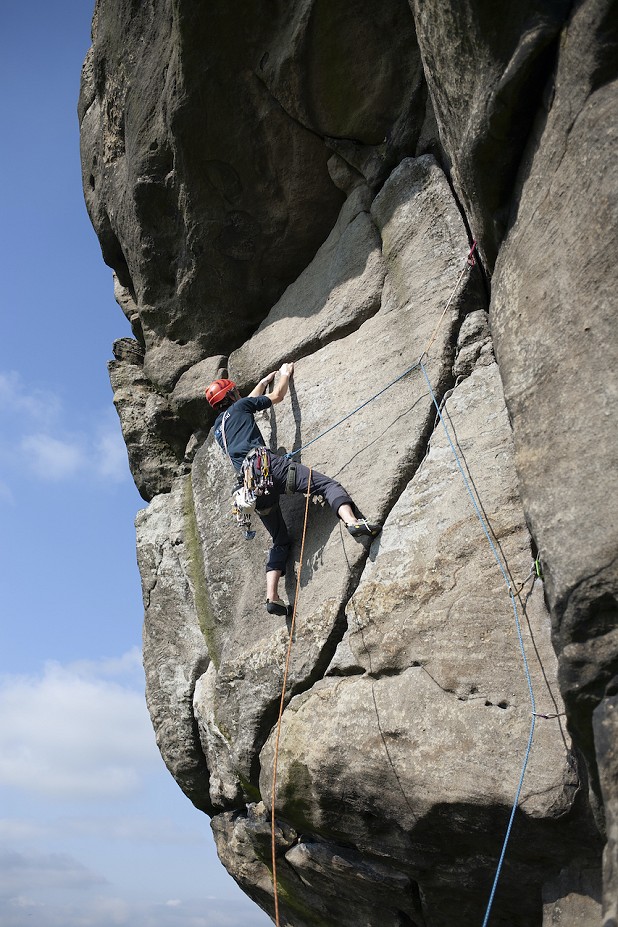
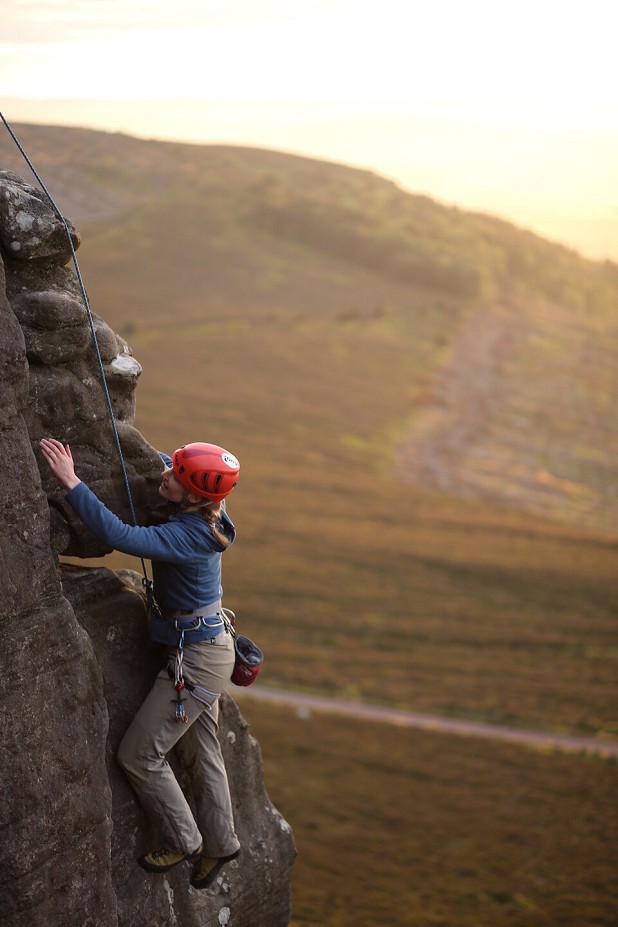
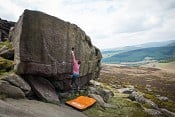












Comments
This is brilliant, well thought out and strikes a chord with me definitely. I'd also add another aspect of climbing is as a form of travel or journey. The same reason people go on walks, runs, bike rides even road trips. Climbing is a verb and a rare method of travel from A to B in the vertical. The perspectives a climb allows you to experience both physically and internally have to be part of the draw.
100% mate. Was it Alex Lowe who said the best climber is the one having the most fun? For me the totality of the experience and the craft of taking part, as you describe, is the fun, independent of grade except the bit where we get satisfaction from doing something difficult, wherever that level is for us.
I also say that I don't climb harder than I did years ago, but I do climb better.
I recall an occasion at university when I was climbing with an exchange student at the local bouldering wall. Despite already being warmed up, I was jumping between various different problems rather than focussing on anything in particular. I climbed a V1 next to a problem he was working and commented "That climbs really well. Have you done it?" He looked at me with a puzzled expression and said he was surprised that I found something so "easy" so enjoyable.
To me, difficulty has never been the main priority in climbing, though I've certainly worked to be able to push my grade. What I really enjoy is the feeling of being solid on something. In control and able to savour the movement, the position, the atmosphere. This is where I think the notion of craft comes in. Being experienced enough, having good enough technique and the physical attributes to respond to what a route presents you with. It's the reason why some very strong people often look like they're struggling and why, very often, people who've been climbing for decades are so enjoyable to watch climb - they are experienced craftspeople who, like a carpenter who can work with any wood to make any variety of things, appear comfortable and competent in any number of climbing situations.
You (and Hubbard) have expressed so well exactly my feelings about climbing. Only occasionally would I be pushing myself, leading right at my limit. My main interest, the longer I climbed, was to climb well, of being in total control, with a wonderful feeling of flow. With me (as I've written in one of my books) the question became not 'Can I get up this climb?' but 'How well can I do it?' All the best climbs I ever did were sheer craft, including the extreme craftsmanship of getting the gear on as quickly and skilfully as possible, so as not to waste energy, and no more nuts than necessary. Hubbard asks what routes felt like a craft: well, all the good ones. Things I climbed well like Cemetery Gates, Kipling Groove, and Vector were pure craftsmanship every inch of the way. I remember with Cemetery Gates I tackled it very 'sideways', laying off the crack most of the way, rather than thugging up it. It was just pure poetry. Feeling, memories that live with you for ever (even though those were nearly 40 years ago.)
I like the "vertical dance" analogy. If there is anything that is about pleasure in movement, it is dance.
Trad = waltz
Sport = rock'n'roll
Bouldering = breakdancing